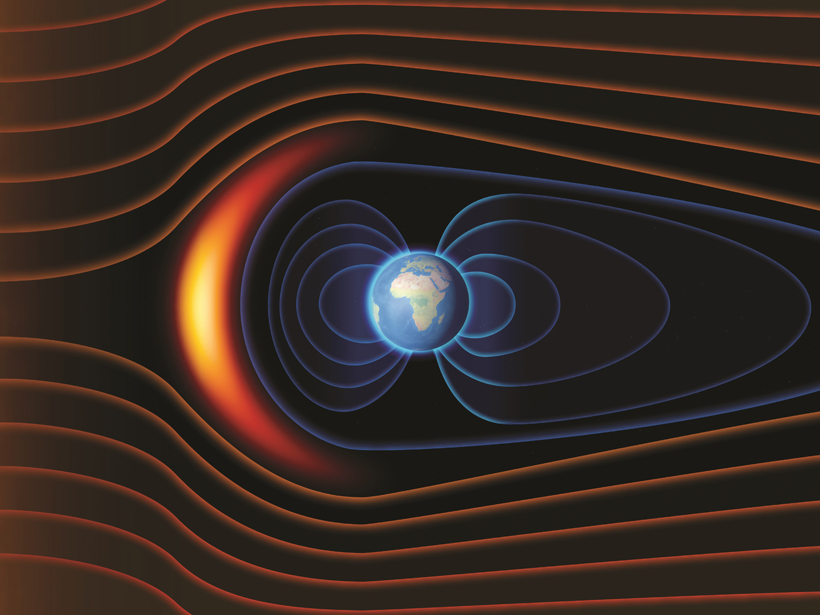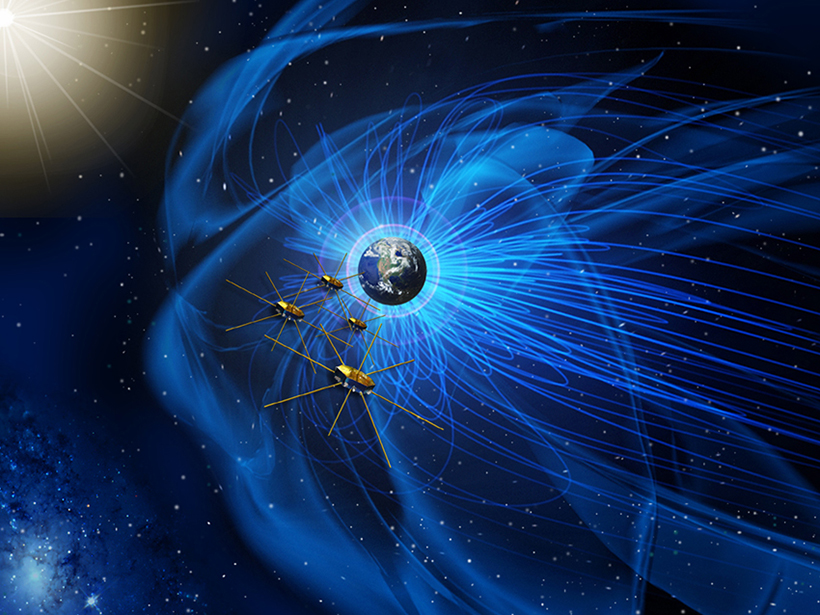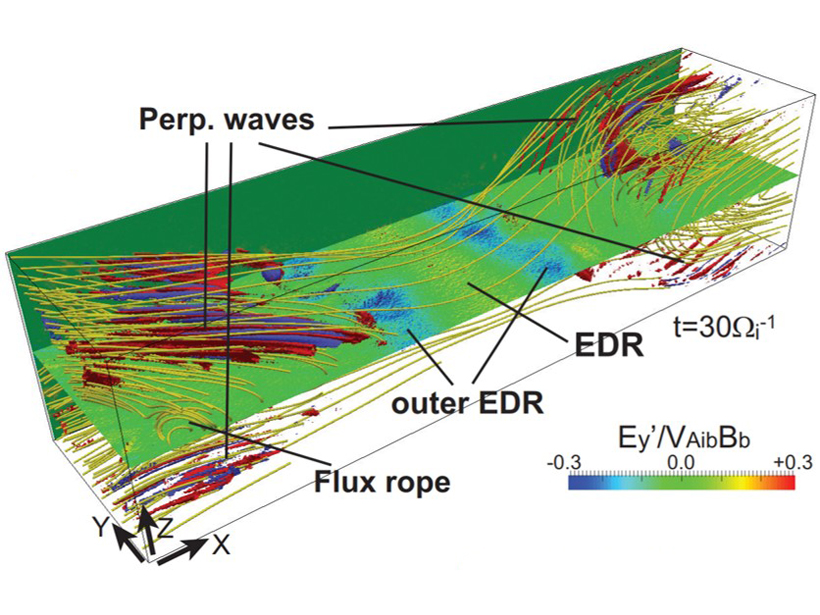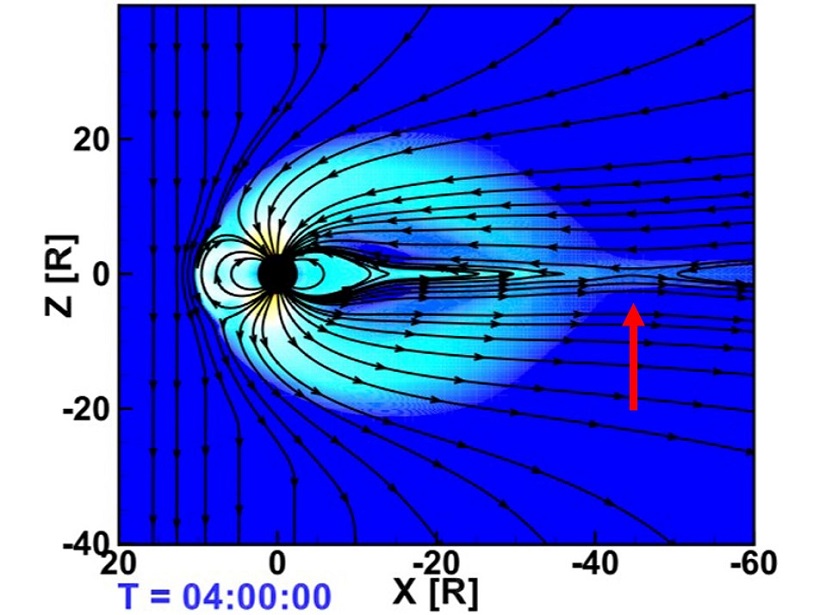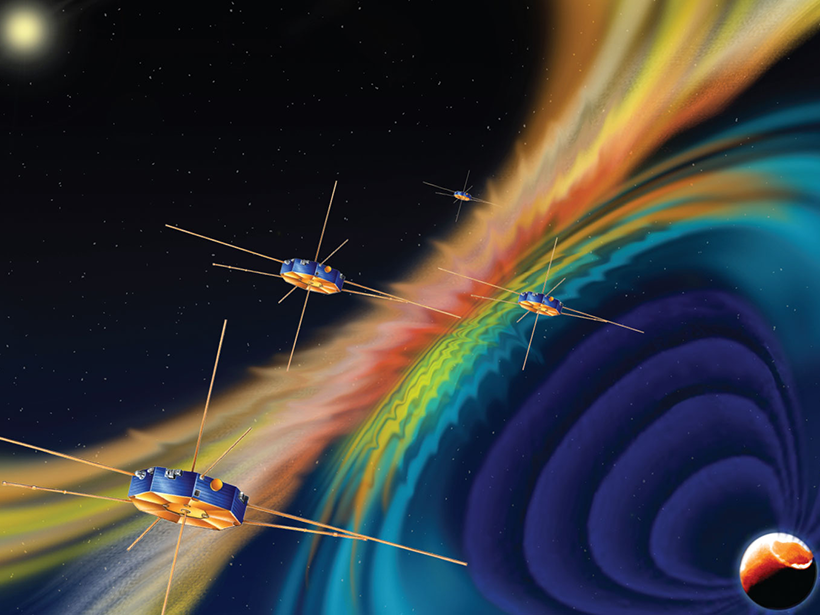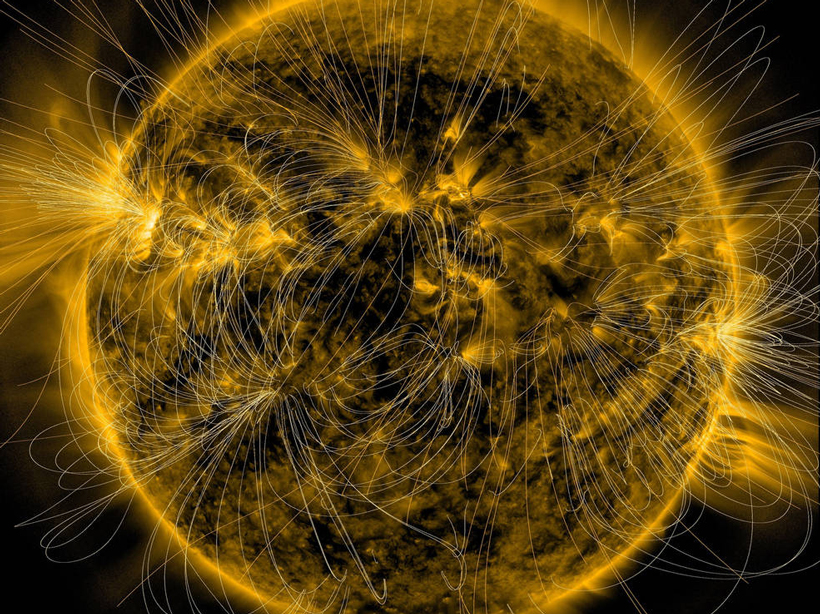A new book describes recent results defining the many pathways and foreshock, bow shock, magnetosheath, and magnetopause phenomena connecting the solar wind to the dayside magnetosphere.
magnetic reconnection
Scientists Claim a More Accurate Method of Predicting Solar Flares
Supercomputer 3D modeling of magnetic fields could help mitigate damage from geomagnetic storms.
Deciphering Electron Signatures in Earth’s Magnetic Tail
A new analysis of spacecraft data collected near the tip of Earth’s magnetotail sheds light on how geomagnetic activity affects the motion of electrons in this region.
Measuring the Magnetic Reconnection Rate in the Magnetotail
Both simulations and observations are used to measure the magnetic reconnection rate in the Earth’s magnetotail, suggesting that the rate is correlated with the intensity of a magnetic substorm.
Evidence That Earth’s Forehead Controls the Wagging of its Tail
Yes, Earth has a tail, a magnetotail, and there is debate about how much Earth’s upper atmosphere plays a role in the controlling the dynamics of this region of space.
Jets of Ionospheric Cold Plasma Discovered at the Magnetopause
The lower-energy particles may play a larger role in magnetic reconnection than previously believed, influencing space weather near Earth.
New Explanation for “Meandering” Electrons Orbiting Earth
A new study proposes a simpler theory to explain a class of electrons zipping around Earth, propelled by magnetic explosions.
For Magnetic Reconnection Energy, O—not X—Might Mark the Spot
A new analysis of satellite data could upend conventional wisdom about how solar storms produce their dangerous radiation—not from X-shaped mergers of magnetic field lines but from swirling vortices.
Explaining Unexpected Twists in the Sun's Magnetic Field
New research shows how the Sun's magnetic field can shift when it approaches Earth, which can throw off space weather forecasts.
Polar Interlopers in the Aurora
A new study suggests that poleward boundary intensifications in the aurora are caused by fast flows of plasma from the poles into the auroral oval.

